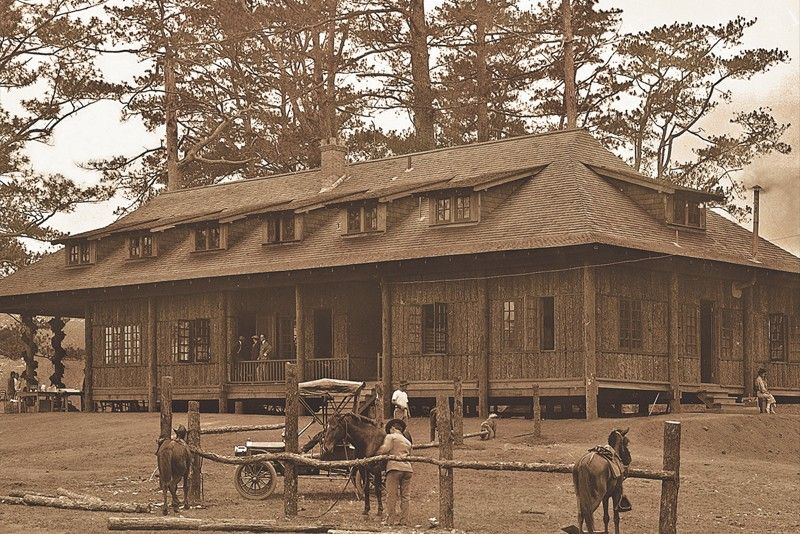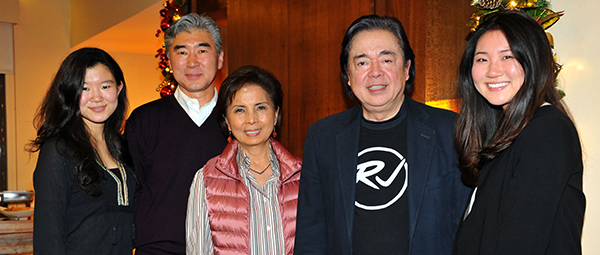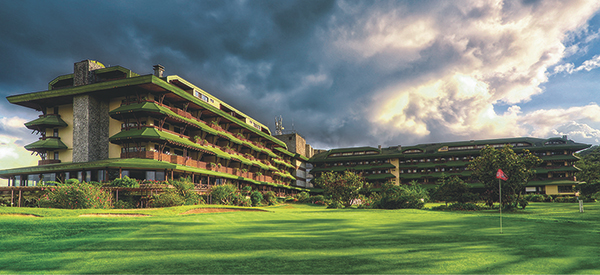Baguio’s creative spirit blooms

1907 Baguio Country Club’s structure during the American colonial era under Governor General Taft.
Baguio is the first Philippine city to be part of UNESCO’s Creative City network and is widely known for its handicrafts, creative artworks, indigenous woodcarving and woven fabrics.
Baguio is delightful no matter what time of the year. Steeped in history, it has been inhabited by the Ibalois and Igorots for more than 700 years and never fully succumbed to our Spanish colonial conquerors.
Under American colonial rule headed by then Governor General William Taft (who eventually became the United States’ 27th president), Baguio became Benguet’s provincial capital in 1901. In fact, it was in this city that World War II formally ended in 1945 with the official surrender of General Tomoyuki Yamashita to the Allied Forces in what is now the residence of the US Ambassador in the middle of John Hay’s pine forest.

US Ambassador Sung Kim with daughters Erika and Erin Kim, Lin Ilusorio Bildner, RJ Jacinto
With his progressive ideas, noted American architect and city planner Daniel Burnham (1846-1912) was instrumental in drawing up plans to make Baguio the country’s summer capital and haven for the American soldiers and civilians who suffered from the scorching summer heat. Considered to be one of the most preeminent American architects of the early 20th century, Burnham’s contributions included not only Baguio but the City of Manila and the provincial capitol buildings of Bacolod and Pangasinan.
For modern-day travelers, it was a chance to once again visit Baguio Country Club, the illustrious 113-year-old historical landmark that offers a series of musical and social events for their members and guests during the holiday season headlined by Classical Odyssey artists Raul Sunico, Peter Porticos, Stephanie Anne Aguilar and Dresden Ramos, together with businessman/musician RJ Jacinto. The club’s director, Lin Ilusorio Bildner, proudly announced that over P1 million was raised and that proceeds of both shows were to be donated for the benefit of Marawi’s women and children who suffered during the terrorist siege.
Coincidentally, this year is also the 23rd celebration of the Panagbenga flower festival, which showcases the native traditions of the Cordillera region, especially since Baguio City was recently named as one of UNESCO’s Creative City for crafts and folk arts, together with Cairo, Chiang Mai, Limoges, Tunis and other diverse cities worldwide. Baguio is the first Philippine city to be part of the global network and is widely known for its handicrafts, creative artworks, indigenous woodcarving and woven fabrics.

The current Baguio Country club was designed by architect Jose “Pingoy” Manosa in 1993 and was rebuilt after the devastating earthquake.
The Creative Cities Network currently has a total of 180 cities in 72 countries that aim “to work together towards a common objective: placing creativity and cultural industries at the heart of their development plans at the local level and cooperating actively at the international level.” The recognition highlights artistry and culture in seven fields: Crafts and Folk Arts, Design, Film, Gastronomy, Literature, Media Arts and Music.
* * *
For comments and ideas, email jacinto.fa@gmail.com.















